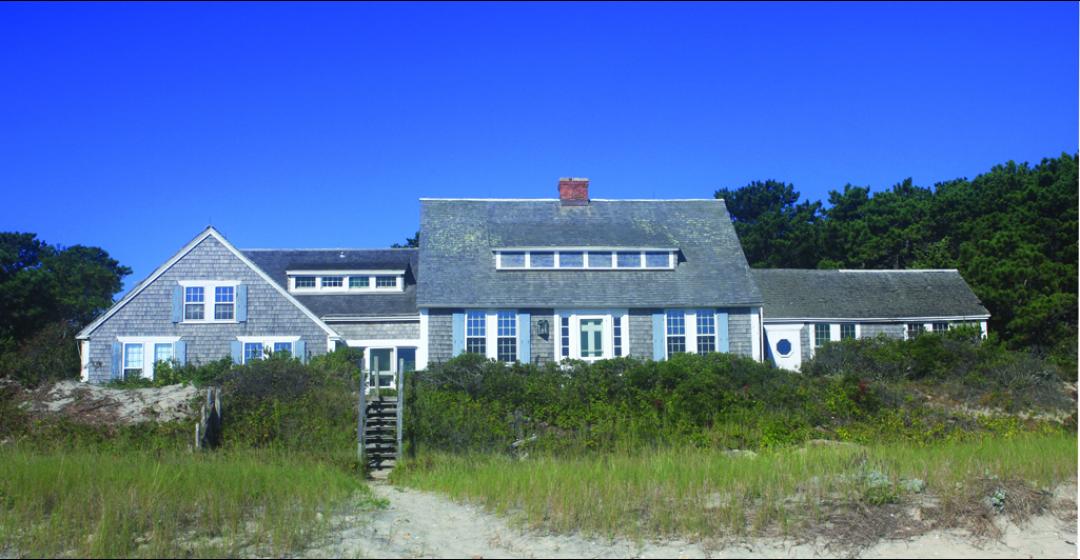As ubiquitous as a white picket fence in Edgartown or a stonewall in Chilmark, the shingled house is synonymous with Vineyard architectural style. Red or white cedar, asphalt or slate – from the sprawling, waterfront estates of Katama to the fishing shacks on Dutcher Dock – if you’re on-Island and in the market for new roofing or sidewall, chances are you’re in the market for shingles.
When European settlers landed on Martha’s Vineyard in the early 1600s, they brought with them traditional building techniques, but took advantage of local timber, using mostly the plentiful oak and pine timber for floors, walls, and beams. To cover the exteriors of their simple dwellings, they used cedar “shakes” – tapered pieces of wood that had been split from larger lengths – creating the textured, shingled look that dominates the Island’s skyline.
Today, shingles are cut by saws, and most of the cedar is shipped in from mainland tree farms. But the quintessential look of the shingled house remains a popular choice for homeowners in most every price range, from modest, Cape-style homes to more lavish beachfront retreats.
What started as a practical solution, based on accessibility of materials and the need for protection against the elements, quickly became part of the Island vernacular. In the late 1800s, the look spawned an architectural movement in resort communities up and down the East Coast. Appropriately dubbed “shingle-style,” these homes were built to accentuate the textural strengths of a shingled façade. Complex rooflines incorporating gables, hips, turrets, and dormers were built on sprawling estates, where the natural colors of the wood complemented the muted tones of the surrounding seaside landscapes.
Island shingler Jim Airasian has been working on roofs for more than thirty years. He’s seen trends come and go, but for the most part, cedar shingles still sell themselves. “Traditionally, it was just what was done. It probably started out with availability,” he said. “People weren’t trucking things in 300 years ago from across the country. Now it’s just what people like.”
The price has to be right too. Airasian noted shifts toward the more affordable asphalt shingles for roofs whenever the economy takes a hit. “The trend with asphalt is that they’re layered now to look like wood,” he said of the popular, “architectural” or “dimensional” asphalt shingles. “People lean toward that a little more.”
As one of the Island’s top shinglers, Airasian’s profession also affords him a unique perspective on local history. Occasionally, while “ripping a roof” – tearing off the old shingles in order to lay on new ones – he and his crew will come across notes scrawled on the underside of the wood, or artifacts tucked against the sheathing. A few years back, while reshingling the sidewall of a building at the Polly Hill Arboretum, he discovered newspapers dating from the nineteenth century, some of them pages of an 1848 Vineyard Gazette. “The person who lived there must have been a hoarder. There were three layers,” Airasian said. “That’s why the oldest stuff was preserved the way it was.”
Sometimes the hidden notes he uncovers provide political commentary. “Yesterday we found something from 1991 about the Iraq war,” he said. Other times, the scrawled-on shingles are just for kicks. “Dummies like myself when I was younger may have written something stupid,” Airasian laughed. “Like a swear or something.”
And then there are the sentimental scribblings. Recently, while repairing a roof he had shingled himself decades earlier, Airasian found a love note he’d written to his wife: Jim Loves Taffy, in his own familiar hand.
“Sort of like carving your name in a tree.”





